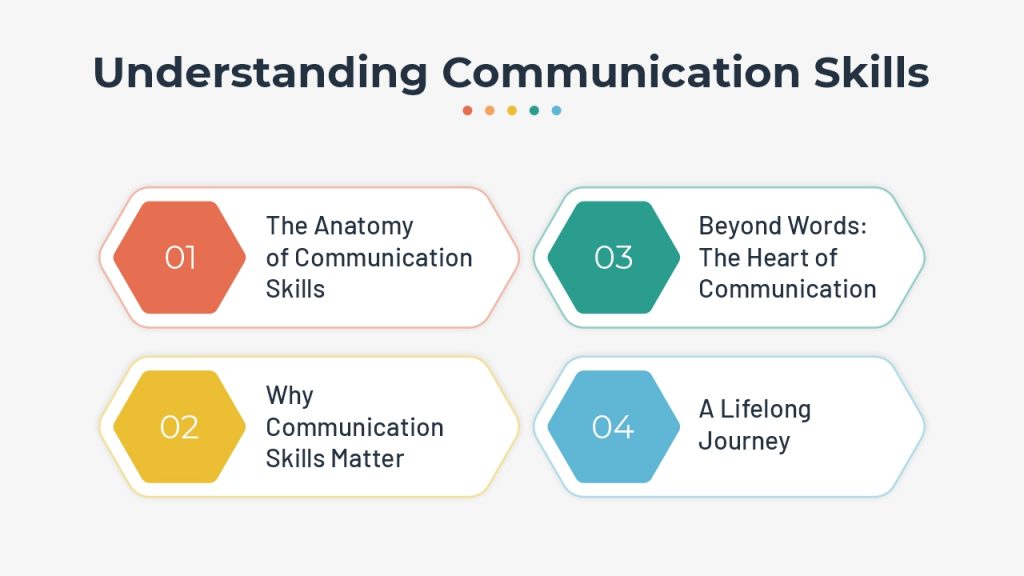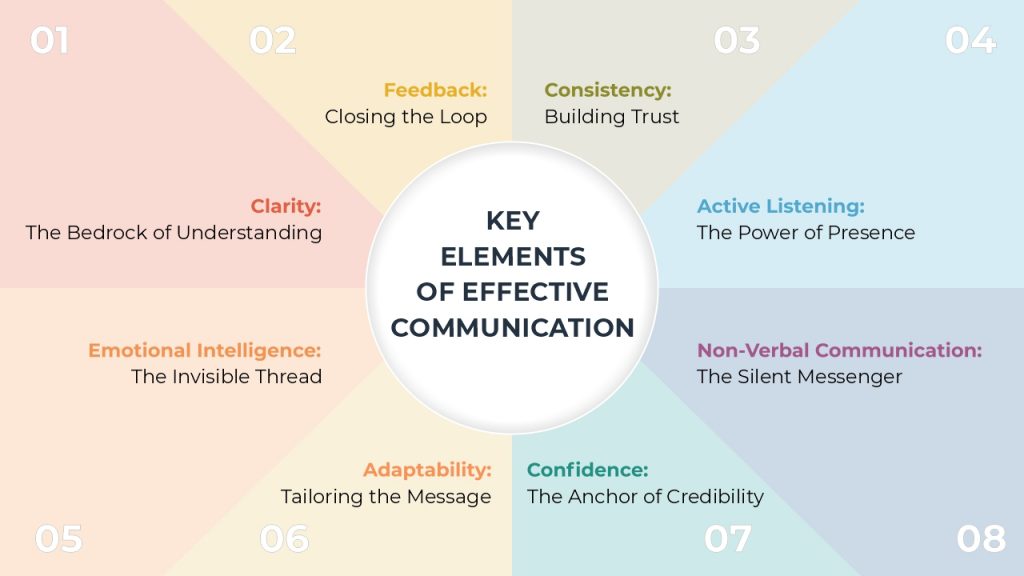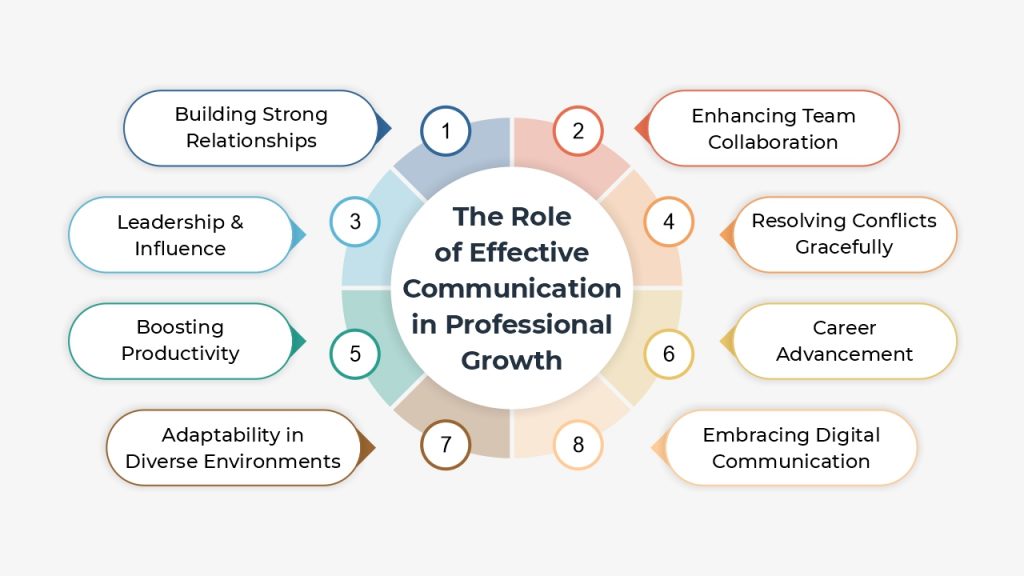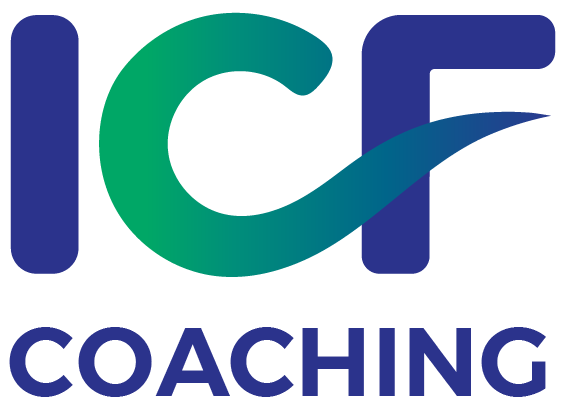Table of Contents
ToggleThe Art of Effective Communication: Skills in Practice

Words are more than mere sounds; they are bridges to understanding, connection, and influence. From the soft whispers of a heartfelt conversation to the commanding tones of a business presentation, communication is the lifeblood of human interaction. Every interaction we have—whether with loved ones, colleagues, or strangers—is built upon the foundation of our communication skills.
But what separates a conversation from a connection? The answer lies in effective communication. It is not just about speaking or listening but about understanding, empathizing, and responding in ways that resonate. Effective communication is the invisible thread weaving our stories together, fostering clarity, trust, and collaboration.
In this fast-paced digital age, where messages fly across continents in seconds and attention spans dwindle, the art of communication has never been more crucial. It transcends words, embracing the nuances of tone, body language, and intent. Let us explore how mastering communication skills can transform not just our conversations but our very lives.
Understanding Communication Skills
Communication is the rhythm of human connection, a delicate dance where words, gestures, and silence create a melody of understanding. At its core, communication skills are the tools we use to express thoughts, emotions, and intentions effectively. But what makes these skills so pivotal in our lives?

The Anatomy of Communication Skills
Communication skills encompass a broad spectrum of abilities—listening, speaking, writing, and interpreting non-verbal cues. They enable us to bridge gaps, resolve conflicts, and build relationships. Without these skills, even the most profound ideas can remain locked in the mind, unable to inspire or connect.
Verbal communication, for instance, paints vivid pictures through words. Non-verbal cues, like a reassuring smile or a firm handshake, add layers of meaning that words alone cannot convey. Written communication immortalizes thoughts, while active listening provides the canvas for meaningful exchange.
Why Communication Skills Matter
In a world teeming with distractions, effective communication is the anchor that grounds us. Strong communication skills foster clarity, ensuring that messages are not just heard but understood. They enhance personal relationships by nurturing trust and empathy and propel professional success by enabling collaboration and leadership.
Consider the workplace. A leader with honed communication skills can inspire a team, resolve misunderstandings, and articulate visions that drive progress. Similarly, in personal relationships, the ability to communicate effectively can dissolve barriers, strengthening bonds and fostering mutual respect.
Beyond Words: The Heart of Communication
True communication transcends the mechanics of language. It is a two-way street paved with empathy, where listening is as crucial as speaking. Effective communication requires tuning into the emotions behind the words, understanding context, and responding thoughtfully.
A Lifelong Journey
Mastering communication skills is not a destination but a journey of growth. It demands practice, patience, and an open heart. The more we refine these skills, the more adept we become at navigating the complex tapestry of human interaction.
In a world where connections define our experiences, communication skills are the key to unlocking richer, more meaningful relationships. They remind us that at the heart of every interaction lies the potential for understanding, collaboration, and unity—a testament to the power of the human voice and spirit.
Key Elements of Effective Communication
Communication is more than a simple exchange of words; it is the art of weaving clarity, intention, and understanding into every interaction. Effective communication, like a well-composed symphony, relies on several essential elements that harmonize to convey meaning and foster connection.

1. Clarity: The Bedrock of Understanding
Clarity is the cornerstone of effective communication. A clear message, free from ambiguity, ensures that the listener or reader fully grasps its intent. Whether it’s an instruction, an idea, or an emotion, precision in language reduces the likelihood of misunderstandings and enhances the exchange.
2. Active Listening: The Power of Presence
True communication thrives on active listening, where attention is undivided, and responses are thoughtful. By genuinely engaging with the speaker, acknowledging their words, and responding empathetically, we create a safe space for authentic dialogue. Listening is not merely hearing—it is understanding with purpose.
3. Emotional Intelligence: The Invisible Thread
Emotion is an integral part of human expression. Effective communication involves recognizing, interpreting, and appropriately responding to emotions—both ours and those of others. This skill fosters trust and builds stronger, more empathetic connections.
4. Non-Verbal Communication: The Silent Messenger
Body language, facial expressions, gestures, and tone of voice often speak louder than words. Non-verbal cues add depth and authenticity to our messages. A warm smile or an open posture can reinforce words, while a dismissive tone can contradict them.
5. Feedback: Closing the Loop
Feedback is the bridge that completes the communication cycle. It confirms understanding, provides an opportunity for correction, and enhances the exchange. Constructive feedback fosters growth, while positive reinforcement encourages continued effort.
6. Adaptability: Tailoring the Message
Communication is not one-size-fits-all. Effective communicators adapt their approach based on the audience, context, and cultural nuances. Whether speaking to a team of professionals or comforting a friend, tailoring the message ensures relevance and impact.
7. Confidence: The Anchor of Credibility
Confidence imbues communication with authority and trustworthiness. A confident speaker commands attention, inspires belief, and ensures that their message resonates. However, confidence must be balanced with humility to maintain approachability.
8. Consistency: Building Trust
Messages that align with actions are more credible. Consistency in communication reflects integrity, reinforcing trust and reliability in personal and professional relationships.
The Art of Mastering the Elements
Mastering these key elements requires practice and self-awareness. It is a journey of constant refinement, where each interaction becomes a lesson in effective communication.
Communication is the glue that binds relationships, the spark that ignites ideas, and the tool that builds bridges across divides. By honing these key elements, we unlock the potential to connect more deeply, lead more effectively, and navigate the world with grace and purpose.
Building Strong Communication Skills
Communication skills are the essence of connection, the thread weaving human relationships together. Building strong communication skills is not an innate gift but a cultivated art, a lifelong journey of learning, practicing, and refining. Whether in personal relationships or professional environments, these skills act as a compass, guiding us toward understanding and harmony.
1. Self-Awareness: The First Step
Building strong communication skills begins with self-awareness. Recognizing how you communicate—your tone, body language, and choice of words—provides a foundation for improvement. Reflect on your interactions and identify areas where clarity or empathy could be enhanced.
2. Active Listening: The Heart of Communication
Listening actively is the cornerstone of effective communication. It involves more than hearing words; it requires understanding the emotions, context, and intent behind them. Practice patience, avoid interruptions, and acknowledge what others say with thoughtful responses.
3. Expanding Your Vocabulary
A rich vocabulary empowers you to express ideas with precision and impact. Regular reading, engaging conversations, and exposure to diverse perspectives can expand your linguistic repertoire, making your communication more nuanced and compelling.
4. Non-Verbal Awareness: Speaking Without Words
Communication extends beyond words. Building strong non-verbal skills—such as maintaining eye contact, adopting open body language, and using appropriate facial expressions—reinforces your message and establishes trust.
5. Practicing Empathy: Bridging Emotional Gaps
Empathy is the glue that binds conversations. By understanding and validating the feelings of others, you create a safe space for open dialogue. Empathy transforms communication from transactional to transformational.
6. Seeking Feedback: A Path to Growth
Feedback is a powerful tool for self-improvement. Encourage others to share their perspectives on your communication style. Constructive feedback sheds light on blind spots, helping you refine your approach.
7. Role-Playing and Practice
Strong communication skills are honed through practice. Role-playing scenarios, whether it’s preparing for a job interview or resolving a conflict, allows you to experiment with different techniques and gain confidence in your abilities.
8. Embracing Technology
In the digital age, communication skills extend to virtual platforms. Practice crafting clear and concise emails, mastering video calls, and using tools like collaborative software to maintain seamless communication in remote settings.
9. Patience and Persistence
Improvement takes time. Each interaction is a stepping stone, offering opportunities to learn and grow. Celebrate small victories and remain persistent in your efforts.
Building Bridges, Not Walls
Strong communication skills are not just about expressing yourself but also about creating bridges of understanding. They enable you to navigate conflicts, share your vision, and connect deeply with others. By investing in these skills, you not only enrich your own life but also positively impact those around you.
The Role of Effective Communication in Professional Growth
In the ever-evolving world of careers, effective communication stands as a cornerstone of professional success. It is the silent force that shapes relationships, fuels collaboration, and transforms ideas into actionable results. Without strong communication skills, even the brightest minds may struggle to thrive in professional environments.

1. Building Strong Relationships
At the heart of every successful career lies a network of relationships. Effective communication fosters trust, respect, and understanding among colleagues, clients, and leaders. A professional who can express ideas clearly and listen attentively builds rapport and earns the respect of peers.
2. Enhancing Team Collaboration
Workplaces thrive on teamwork, and effective communication is the glue that binds teams together. Clear communication ensures that goals are understood, roles are defined, and expectations are met. Whether through concise emails, productive meetings, or transparent discussions, strong communicators drive team success.
3. Leadership and Influence
Effective communication is the hallmark of great leaders. Leaders inspire through words, guide through clarity, and resolve conflicts with tact. A leader’s ability to articulate a vision, provide constructive feedback, and motivate their team is directly linked to their communication prowess.
4. Resolving Conflicts Gracefully
Conflicts are inevitable in any professional setting. However, effective communication transforms conflicts from obstacles into opportunities for growth. By listening actively, empathizing, and addressing issues with diplomacy, professionals can navigate tensions and maintain a harmonious work environment.
5. Boosting Productivity
Clarity in communication directly impacts efficiency. When instructions, objectives, and feedback are conveyed without ambiguity, teams can work more effectively, avoiding the pitfalls of misinterpretation and wasted effort.
6. Career Advancement
Strong communication skills open doors to advancement. During interviews, presentations, or networking events, professionals with the ability to express themselves confidently and effectively leave a lasting impression. Communication skills also play a crucial role in negotiating promotions, leading projects, and demonstrating leadership potential.
7. Adaptability in Diverse Environments
Today’s workplaces are increasingly diverse, with team members from various cultural, linguistic, and professional backgrounds. Effective communication requires adaptability—tailoring messages to resonate with different audiences and fostering inclusivity.
8. Embracing Digital Communication
The rise of remote work and digital collaboration tools has elevated the importance of virtual communication skills. Professionals must master the art of clear and concise written communication, as well as the ability to engage and connect during virtual meetings.
A Skill That Shapes Futures
Professional growth is not merely about technical expertise—it is deeply intertwined with how well one communicates. Effective communication transforms challenges into opportunities, nurtures collaboration, and positions professionals as leaders in their fields.
By prioritizing communication skills, professionals unlock their potential, paving the way for enduring success and meaningful contributions in their careers.
Effective Communication in Personal Relationships
Personal relationships are the heart of human existence, and effective communication is their lifeblood. It nurtures understanding, deepens bonds, and resolves conflicts, creating a foundation for trust and harmony. Whether with a partner, family member, or friend, the ability to convey thoughts and emotions effectively transforms relationships into enriching connections.
1. The Role of Honesty in Communication
Honesty is the cornerstone of effective communication in personal relationships. Speaking truthfully fosters trust and eliminates misunderstandings. Whether sharing joys, concerns, or challenges, transparency ensures that relationships remain genuine and resilient.
2. The Importance of Listening
Listening is the unsung hero of effective communication. Being fully present and attentive during conversations shows respect and care. By listening not just to words but also to tone and emotions, we create a safe space for loved ones to express themselves.
3. Non-Verbal Communication: The Unspoken Language
Words are powerful, but non-verbal cues—like a comforting touch, a warm smile, or attentive eye contact—speak volumes. Non-verbal communication bridges gaps that words sometimes cannot, conveying empathy and affection in profound ways.
4. Expressing Emotions Constructively
Healthy relationships rely on the ability to express emotions without fear of judgment. Whether sharing happiness or addressing frustrations, using “I” statements (e.g., “I feel” instead of “You always”) can prevent defensiveness and foster mutual understanding.
5. Managing Conflicts with Care
No relationship is free of conflict, but effective communication turns disagreements into opportunities for growth. Practicing empathy, acknowledging the other person’s perspective, and finding common ground help resolve issues without damaging the relationship.
6. Setting Boundaries with Clarity
Boundaries are essential for maintaining balance in relationships. Clearly communicating personal needs and limits ensures that both parties feel respected and valued. Effective boundaries protect individuality while fostering mutual respect.
7. Adapting to Changing Dynamics
As relationships evolve, so do communication needs. Life transitions, new roles, or changing circumstances require adaptability. Openly discussing these shifts helps relationships grow and remain strong.
8. Celebrating Shared Moments
Effective communication isn’t only about resolving issues—it’s also about celebrating joys and successes. Expressing appreciation, sharing laughter, and reminiscing about good times strengthen the emotional bond.
A Lifelong Investment in Connection
Effective communication in personal relationships is not a one-time effort but a continuous practice. It requires patience, empathy, and a willingness to grow together. By mastering this art, we build relationships that not only endure but also bring immense joy and fulfillment.
Communication is the bridge to understanding, the balm for discord, and the spark that keeps relationships alive. Through effective communication, we nurture the love and connections that make life meaningful.
Tips for Mastering Communication Skills
Mastering communication skills is an art that transforms how we interact with the world. It empowers us to connect, express, and build bridges where gaps may exist. While it’s a lifelong journey, adopting thoughtful strategies can accelerate growth in this essential domain. Here are practical tips to hone your communication abilities and achieve effective communication in every aspect of life.
1. Embrace Active Listening
Effective communication starts with listening. Truly hear what others are saying by maintaining eye contact, nodding in acknowledgment, and avoiding interruptions. Listening with the intent to understand rather than respond deepens connections and builds trust.
2. Practice Empathy
Empathy is the ability to put yourself in someone else’s shoes. When communicating, consider the emotions and perspectives of others. A simple phrase like “I understand how you feel” can transform the tone of a conversation and strengthen bonds.
3. Hone Your Non-Verbal Skills
Non-verbal communication is as important as spoken words. Pay attention to your body language, facial expressions, and gestures. Maintaining open and approachable non-verbal cues enhances your message and leaves a positive impression.
4. Be Clear and Concise
Simplicity is the soul of effective communication. Avoid jargon or overcomplicating your message. Whether explaining a concept or expressing feelings, clarity ensures that your audience understands you without confusion.
5. Ask Open-Ended Questions
Encourage deeper conversations by asking open-ended questions. Instead of “Did you like it?” try “What did you enjoy most about it?” This invites more detailed responses and fosters meaningful dialogue.
6. Build Your Vocabulary
A rich vocabulary enhances your ability to express yourself precisely and confidently. Read widely, engage in conversations, and explore new words to diversify your linguistic toolkit.
7. Adapt to Your Audience
Communication is not one-size-fits-all. Tailor your approach to suit the audience, whether speaking with colleagues, friends, or strangers. Adjust your tone, language, and style to resonate effectively with each group.
8. Stay Open to Feedback
Constructive feedback is a powerful tool for improvement. Invite others to share their observations about your communication style. Use their insights to refine and grow.
9. Practice Mindful Communication
Mindfulness is the art of being present. When engaging with others, focus entirely on the moment, avoiding distractions like phones or wandering thoughts. This attentiveness fosters authentic connections.
10. Leverage Technology Wisely
In today’s digital era, written communication—emails, messages, and social media—is crucial. Practice writing clear, concise, and professional messages while being mindful of tone and context.
11. Seek Opportunities to Practice
Practice makes perfect. Participate in public speaking events, join debate clubs, or engage in meaningful discussions with friends. Every interaction is an opportunity to refine your communication skills.
12. Manage Your Emotions
Emotionally charged conversations can derail effective communication. Practice staying calm, articulate your thoughts respectfully, and avoid reacting impulsively.
A Gateway to Connection and Success
Mastering communication skills unlocks doors to personal growth, professional achievement, and meaningful relationships. Each conversation is an opportunity to learn, connect, and leave a lasting impression. By applying these tips with dedication and consistency, you can transform your communication abilities into a powerful tool for building a better future.
Common Challenges in Communication and How to Overcome Them
Communication, though essential, often presents challenges that can disrupt understanding and connection. Misinterpretations, emotional barriers, or cultural differences are just a few of the hurdles that complicate our interactions. However, identifying these challenges and employing strategies to overcome them can lead to more effective communication and harmonious relationships.
1. Misunderstandings and Assumptions
One of the most common challenges is misinterpretation. People often hear what they expect rather than what is said, leading to confusion or conflict.
Solution: To overcome this, practice active listening and seek clarification when necessary. Phrases like “What I’m hearing is…” or “Could you explain that further?” can prevent assumptions from clouding the message.
2. Emotional Barriers
Emotions such as anger, anxiety, or frustration can distort communication. For instance, heightened emotions may lead to impulsive statements or shutting down completely.
Solution: Cultivate emotional intelligence by recognizing and regulating your feelings. Pause before responding and approach conversations with a calm and composed demeanor.
3. Lack of Clarity
Ambiguity or vagueness can leave the listener puzzled, often resulting in ineffective communication. This is particularly problematic in professional settings where precision is crucial.
Solution: Focus on clear and concise messaging. Structure your thoughts before speaking or writing, and ensure your key points are easy to understand.
4. Cultural and Linguistic Differences
Cultural norms and language variations can lead to unintentional miscommunications. What is acceptable in one culture may be perceived differently in another.
Solution: Develop cultural sensitivity by educating yourself about different customs and practices. Be patient and adaptable, especially when communicating across cultures.
5. Over-reliance on Technology
Digital communication, while convenient, lacks the nuances of face-to-face interaction. Emails or texts can sometimes fail to convey tone, leading to misinterpretation.
Solution: When discussing complex or sensitive topics, prioritize verbal or face-to-face communication. Use technology thoughtfully and include tone indicators when needed.
6. Interruptions and Distractions
External interruptions or multitasking during a conversation can disrupt the flow and create misunderstandings.
Solution: Create a distraction-free environment for important discussions. Give your full attention to the conversation, showing respect and focus.
7. Fear of Speaking Up
Some individuals struggle with confidence, leading to hesitation or silence during critical moments.
Solution: Build self-confidence by preparing for discussions in advance. Practice speaking in small groups and gradually expand to larger audiences.
8. Resistance to Feedback
Feedback, though vital for improvement, can sometimes be perceived as criticism, leading to defensiveness.
Solution: Approach feedback as an opportunity for growth. Listen with an open mind and ask for clarification to better understand the intent behind the message.
9. Generational Gaps
Different age groups often have varied communication styles, which can result in disconnects in understanding or approach.
Solution: Bridge generational gaps by finding common ground and respecting differences. Adapt your communication style to suit the preferences of the other party.
10. Overcoming Personal Biases
Personal biases can color perceptions and hinder objective communication. These biases often operate unconsciously.
Solution: Cultivate self-awareness by reflecting on your beliefs and prejudices. Approach conversations with an open mind, valuing diverse perspectives.
Mastering Challenges for Lasting Connections
Communication challenges are inevitable, but they are not insurmountable. By adopting strategies to address these issues, you can transform obstacles into opportunities for deeper understanding and stronger relationships. Effective communication is a journey, not a destination—and with every step, you refine the art of connection.
FAQs
Conclusion
Communication is more than a skill—it’s an art and a science. By mastering effective communication, we unlock the doors to understanding, collaboration, and growth. So, let’s embrace this journey and let our voices resonate with clarity and compassion.

